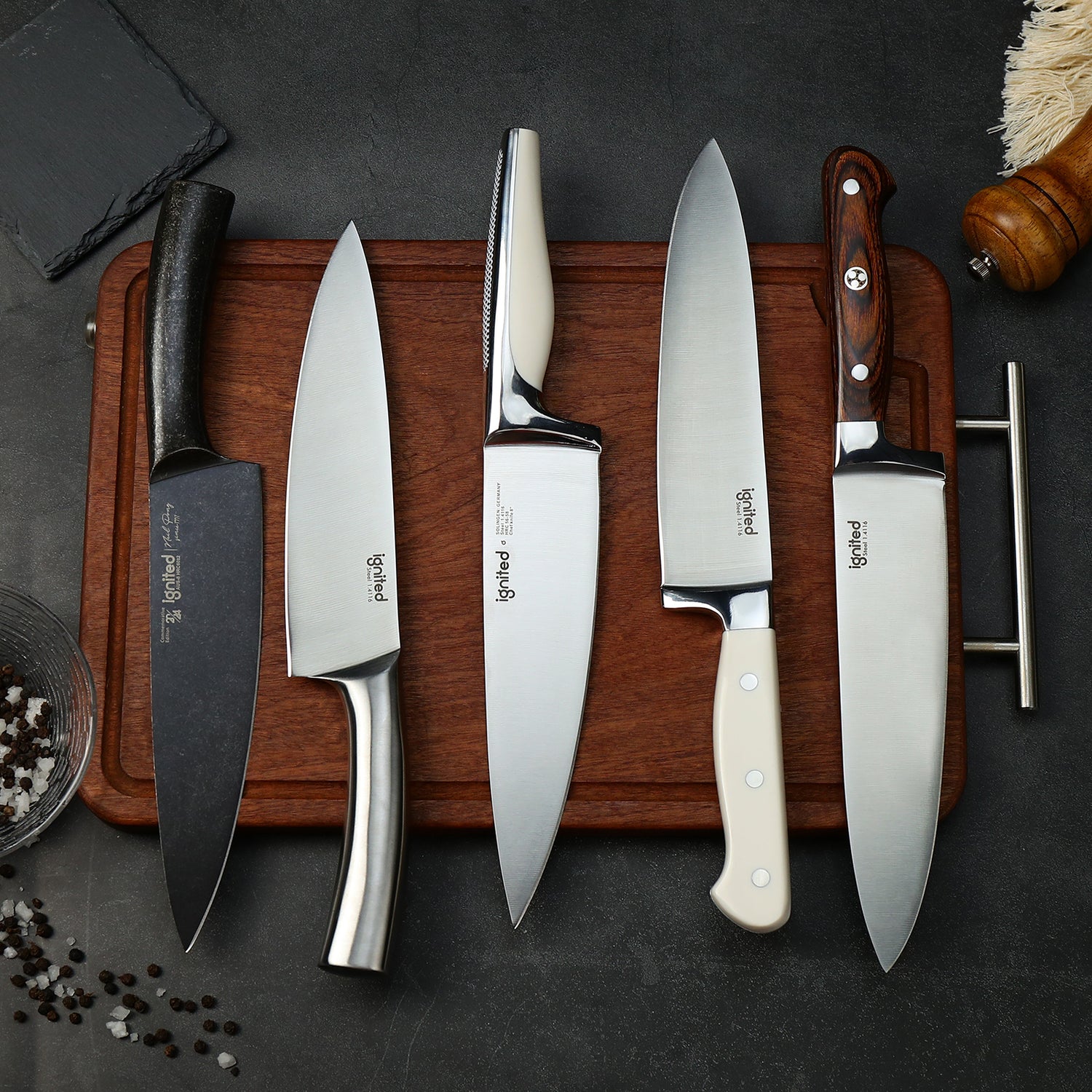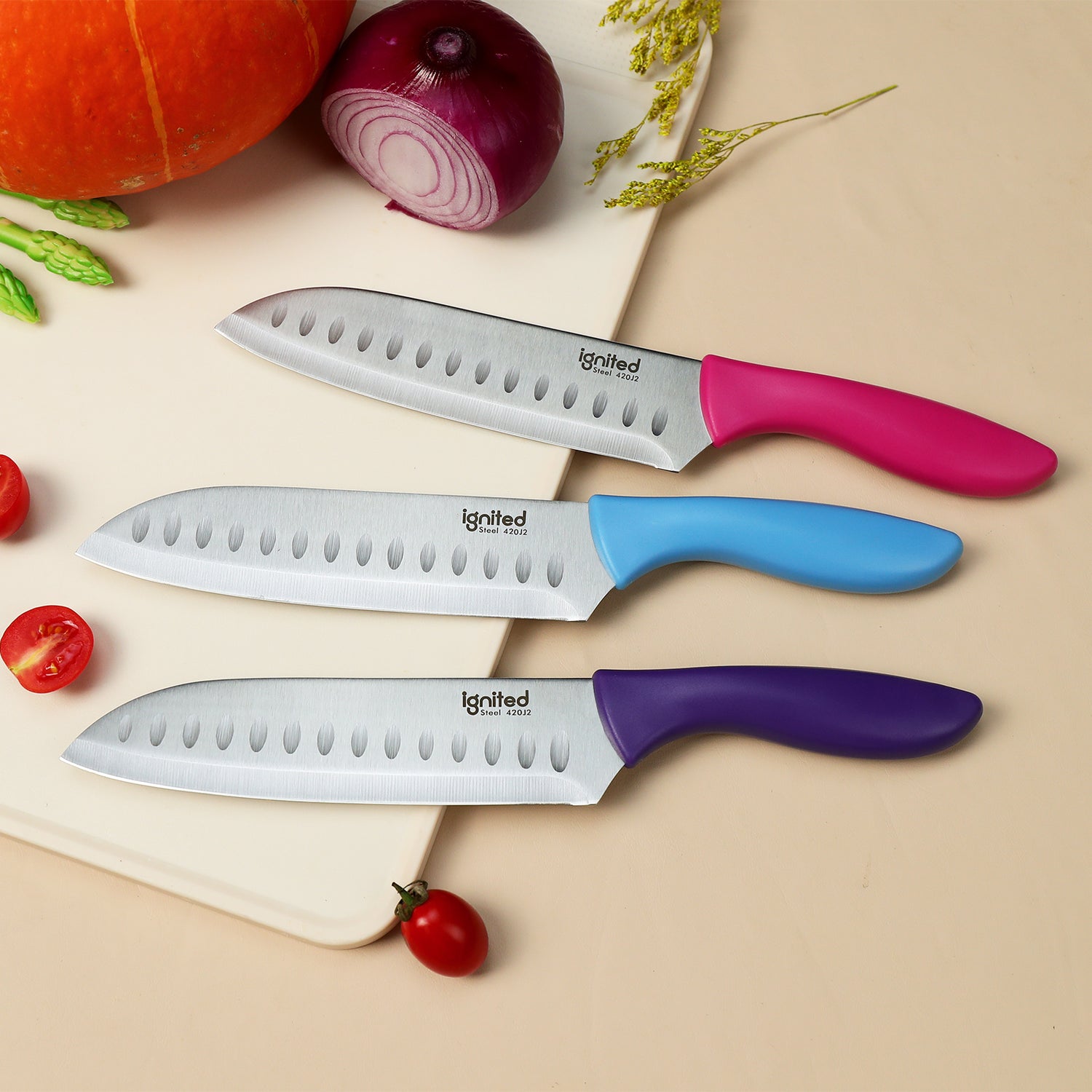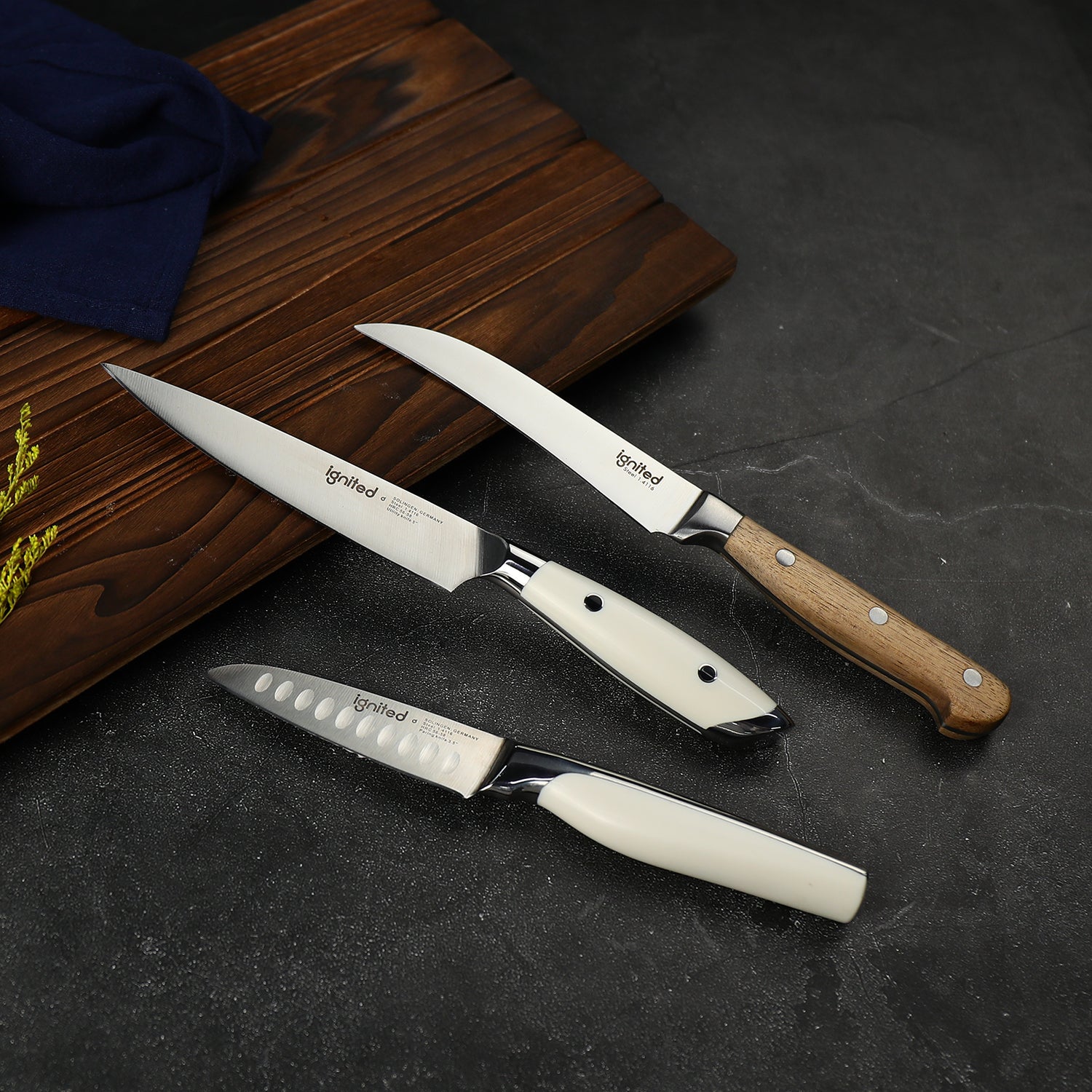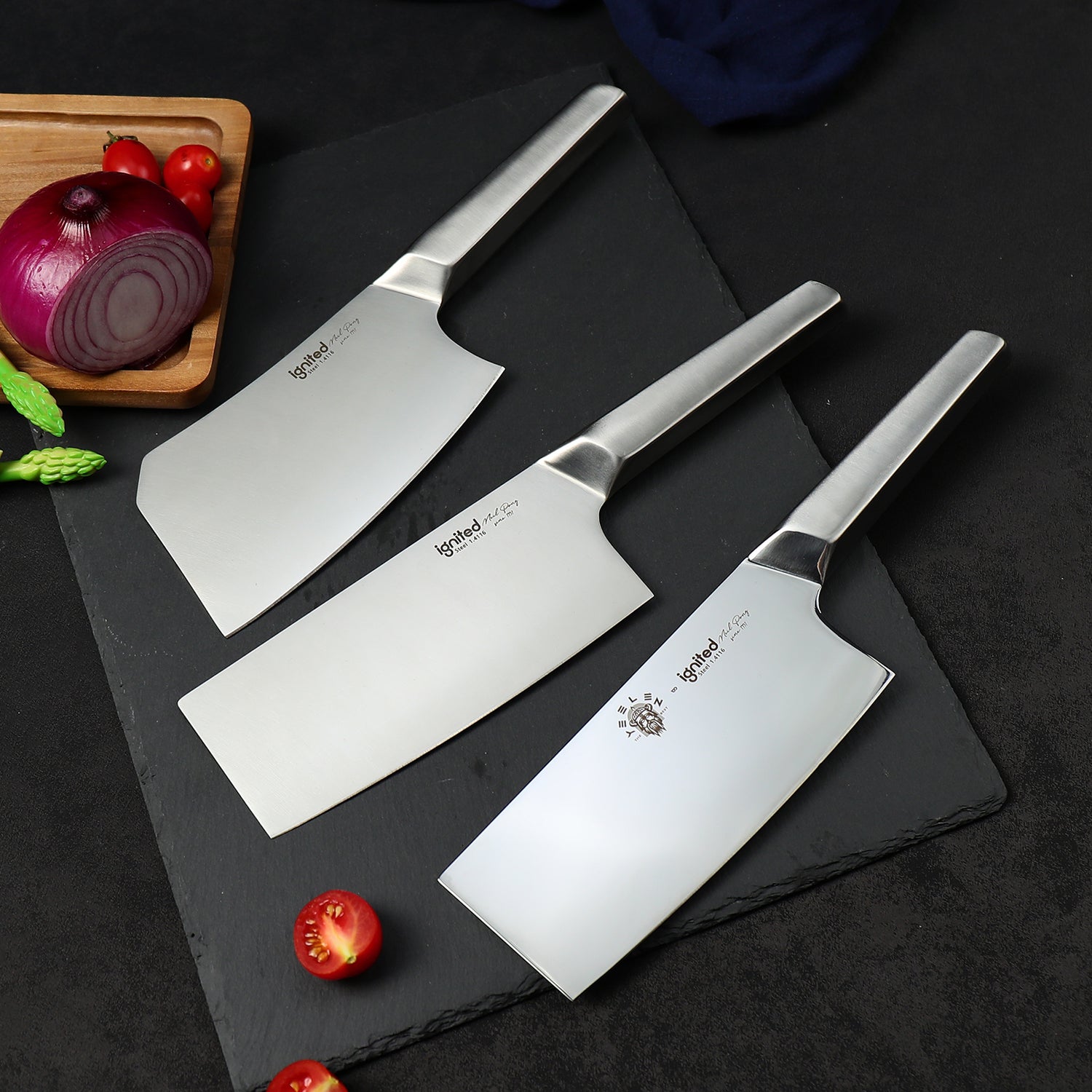Long-Term Maintenance for Bamboo Cutting Boards
Bamboo cutting boards are popular for good reasons: they're renewable, strong and visually pleasing. But bamboo is sensitive to moisture, heat and incorrect cleaning — and that’s where long-term maintenance matters. Below is a clear, practical care plan to keep a bamboo board functional, hygienic and beautiful for years.
Understanding Bamboo as a Material
The Benefits of Bamboo
- Fast-growing, renewable resource — eco-friendly choice.
- Dense fibers produce a hard, durable surface for daily prep.
- Natural look and texture that complements kitchen aesthetics.
The Drawbacks of Bamboo
- Sensitive to prolonged moisture and extreme heat — can warp or crack.
- Layered/laminated boards may delaminate if soaked repeatedly.
- Will dry out and absorb stains/odors if not regularly oiled.
Pro tip: Before first use, give a new bamboo board a full oiling and overnight rest — it reduces early absorption and improves longevity.
Cleaning Your Bamboo Cutting Board
Daily Cleaning Practices
- Hand-wash after every use with warm water and a mild dish soap using a soft sponge.
- Do not soak. Rinse thoroughly and dry immediately with a clean towel.
- Air-dry upright or on a rack so both sides get airflow.
Deep Cleaning Techniques
- For raw meat or fish: rinse, then wipe with a 1:1 white vinegar/water solution; rinse and dry.
- To remove stains or odors: sprinkle baking soda, scrub gently, rinse and dry.
- Lemon + coarse salt works well as a natural scrub and deodorizer — rub, rinse and dry.
Avoiding Harsh Chemicals
- Avoid bleach, strong alkalis and abrasive pads (steel wool) — they damage the bamboo surface and any adhesives.
- Avoid steam cleaners or very hot water repeatedly — heat + moisture = warping risk.
Seasoning Your Bamboo Cutting Board
The Importance of Seasoning
Food-grade mineral oil or board oil penetrates fibers and forms a water-resistant barrier that reduces staining, cracking and odors. Wax blends (mineral oil + beeswax) add more surface protection.
How to Season Your Board
- Clean and fully dry the board (air dry or towel dry — overnight is ideal).
- Pour a small amount of food-grade mineral oil and rub it into the grain with a lint-free cloth, following the grain.
- Let oil absorb for 4–12 hours or overnight; wipe off excess oil.
- For extra protection, apply a thin layer of beeswax-based board balm after oiling and buff to a sheen.
Frequency of Seasoning
- Typical home use: season every 3–4 weeks.
- High-use kitchens or dry climates: season every 2 weeks.
- Signs it needs oil: surface looks dull, feels rough, or water soaks in instead of beading.
We recommend using food-grade mineral oil (not cooking oils like olive) because edible oils can go rancid.
Storing Your Bamboo Cutting Board
Ideal Storage Conditions
- Store in a dry, ventilated place away from direct heat sources (stove, oven) and direct sunlight.
- Ensure the board is fully dry before storing to prevent mold and odors.
Vertical vs. Horizontal Storage
- Vertical storage (on a rack or in an upright slot) is preferred — improves airflow and speeds drying.
- If stored flat, use spacers or a breathable mat and flip periodically to prevent moisture build-up on one side.
Preventing Damage to Your Bamboo Cutting Board
Avoiding the Dishwasher
Dishwashers combine heat, moisture and aggressive detergents — a perfect recipe for warping, cracking and delamination. Always hand-wash bamboo boards.
Using Cutting Boards Properly
- Use sharp knives — dull blades force extra pressure and make deeper gouges.
- Avoid chopping through bones or heavy cleaving on bamboo — use a dedicated butcher board for heavy tasks.
- Keep raw meat on a separate board when possible to prevent cross-contamination and staining.
Regular Inspections
- Inspect monthly for deep cuts, cracks, delamination or loose layers.
- Small scratches: sand lightly with fine-grit sandpaper (grain direction), clean and re-oil.
- Major cracks or delamination mean it’s time to replace the board for hygiene and safety.
Addressing Common Issues
Dealing with Odors
- Sprinkle baking soda, scrub with a damp cloth, rinse and dry. Repeat if needed.
- Rub with half a lemon or vinegar solution to neutralize lingering smells; rinse and dry thoroughly.
- After deodorizing, re-oil the board to restore protection.
Removing Stains
- Baking soda paste or lemon + salt scrub helps lift stains. Use gentle, circular motions and rinse well.
- For surface pigment stains, light sanding followed by oiling usually restores appearance.
Repairing Minor Damage
- Sand shallow gouges with 400–800 grit sandpaper along the grain, clean dust, then re-oil.
- Small gaps or checks can sometimes be filled with food-safe wood filler, then sanded and oiled — but deep structural damage should lead to replacement.
If your board warps slightly, try flattening it by lightly dampening the concave side and placing weight on it while it dries in a controlled environment — but prevention is better than repair.
Frequently Asked Questions
1. How often should I clean my bamboo cutting board?
Hand-wash after every use. For raw meat or fish, follow with a vinegar rinse or baking soda scrub for extra sanitation, then dry completely.
2. Can I put my bamboo cutting board in the dishwasher?
No. The dishwasher exposes boards to heat, steam and harsh detergents that cause warping and cracking.
3. How do I know when to re-oil my board?
When water stops beading and soaks in, or the board looks dull or feels dry — it’s time to re-oil.
4. What should I do if my bamboo board develops a strong odor?
Use baking soda or lemon + coarse salt to scrub, rinse and dry thoroughly. After odor removal, re-oil the board.
5. Is it safe to use bamboo cutting boards for all types of food?
Yes for most foods, but for food safety we recommend using separate boards for raw meats and for ready-to-eat items to avoid cross-contamination.
Conclusion
Bamboo boards are a smart, sustainable kitchen choice — but they thrive when given simple, consistent care: hand-wash, dry quickly, season regularly, store upright and avoid harsh conditions. With the maintenance steps above, a bamboo cutting board will stay hygienic, resist stains and odors, and remain a beautiful, useful tool in your kitchen for years.
Notes & Sources
This practical guide is based on common industry practices for wooden and bamboo boards and Ignited Cutlery’s product care recommendations. For deep academic sources on bamboo material science, consult wood product and material engineering references.





